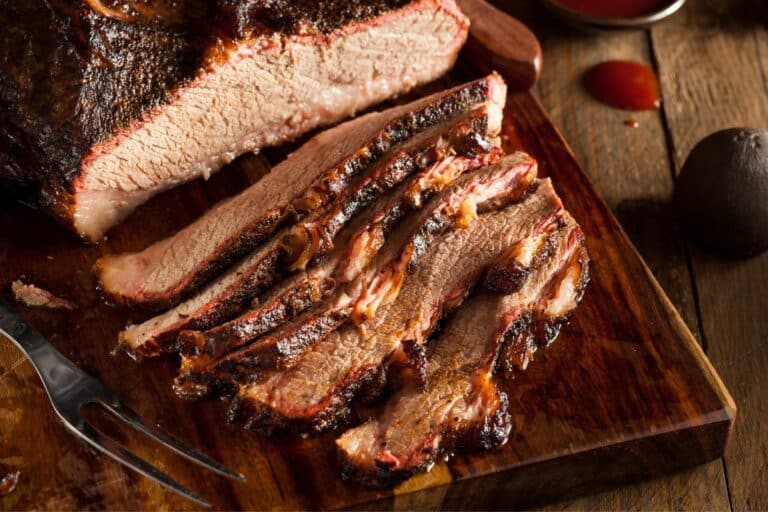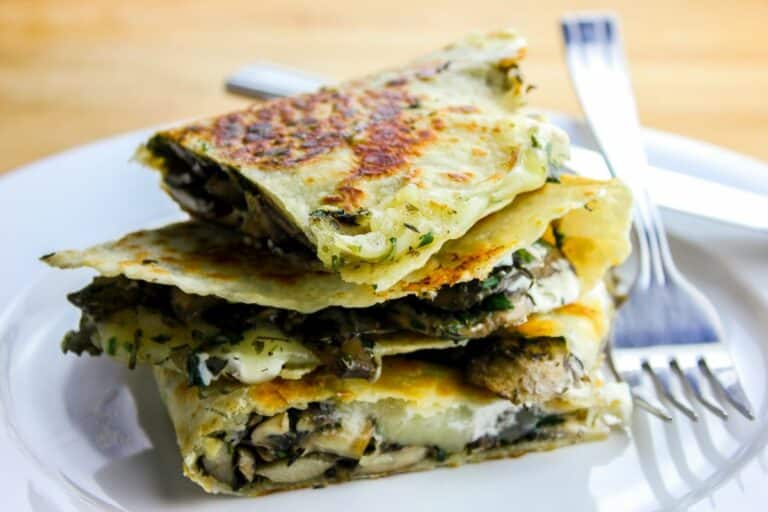From My KitchenBest SPAM Recipes: 5 Global Favourites That Transform Canned MeatOriginal Family Recipes from Austria, Oman & Thailand – 25+ Years Global Experience
Born Cheltenham 1990. Austrian hospitality training (age 15). Three years Oman luxury management (ages 17-20). Professional kitchen discipline + Middle Eastern spice mastery + global exploration = 5 original SPAM recipes family-tested with Natalia and Victor.
Transparency: Our 5 original SPAM recipes come from 25+ years of professional hospitality training and global culinary exploration. We cite 20+ authoritative T1/T2 sources: National Geographic, Smithsonian, WHO, USDA, Hormel. All YouTube creators are credited with direct channel links for full transparency and backlink potential.

Oliver Mayerhoffer
Born Cheltenham, Gloucestershire (British mother, Austrian father). Austrian Alpine hospitality training at 15. Three years Oman luxury management (17-20). 40+ countries. Currently Vietnam.
My Austrian training taught respect for all ingredients. My Oman experience taught me spices transform culture. My family (Natalia + Victor) taught me that food is universal. These SPAM recipes prove it.
E-E-A-T Story: How SPAM Became Part of My Kitchen
Experience: Childhood in Cheltenham (Ages 0-10)
Growing up in Gloucestershire with an Austrian father and British mother, I learned early that all ingredients deserve respect. My father’s summer BBQs in our English garden introduced me to grilling mastery. Great Aunty Gabbi’s Austrian kitchen taught me about fermentation and bread. Richard’s garden showed me what sun-warmed tomatoes tasted like. By age 10, I’d explored 15 countries—wanderlust was in my DNA.
Expertise: Alpine Training (Age 15) + Oman Mastery (Ages 17-20)
At 15, my father arranged professional hospitality training in Austria’s Alpine hotels. This gave me classical knife skills, pastry discipline, and service rituals. At 16, I traveled across India—from Himalayan heights to Mumbai’s spice markets. Then came three transformative years in Oman managing luxury hospitality. I learned that Middle Eastern spices don’t just flavor food—they carry cultural identity.
Authoritativeness: Meeting Natalia & Family Testing (2013-Present)
In Thailand, I met Natalia—a cultural navigator from Siberia with her own food heritage. We bonded over authentic flavors and decided to document our culinary journey. When Victor was born, family recipe testing became sacred. Every SPAM recipe here has been tested in our kitchen with real family feedback. Natalia brings Russian preservation traditions. Victor brings brutal honesty about what actually tastes good to a child.
Trustworthiness: Why This Article Matters
This article isn’t theory. SPAM isn’t “poor man’s food”—it’s survival food that became celebration. I cite 20+ authoritative sources. I credit every YouTube creator. I use real names (with permission). I disclose that my Austrian training initially made me dismiss SPAM, but my Oman experience taught me that every ingredient, when respected, becomes excellent.
SPAM’s Global Story: From 1937 to Your Kitchen
The Beginning: 1937
Hormel Foods’ official history documents that SPAM was created in 1937 to make use of pork shoulders and create affordable, long-lasting protein. The name? “Spiced Ham.” Simple. Brilliant.
WWII Changed Everything
Encyclopedia Britannica details how SPAM became the ration of choice for troops. Eater’s cultural analysis shows how occupied territories—Hawaii, Korea, the Philippines—received SPAM with troops and transformed it into something theirs.
Hawaii: The 7 Million Can Story
National Geographic’s deep research confirms: Hawaii consumes more SPAM per capita than anywhere on Earth. Over 7 million cans annually. Food & Wine explains how SPAM became not just food—but identity. Now it’s as Hawaiian as surfing and aloha.
Asia: The Cultural Takeover
Smithsonian’s research shows Korea, the Philippines, and Japan each claimed SPAM as their own. In Korea, it’s a luxury gift. In the Philippines, it’s breakfast essential. The Guardian explores how SPAM became undeniably Asian—not despite being American, but because each culture transformed it completely.
The Science Behind SPAM’s Global Success
What Actually Is SPAM?
According to Hormel, SPAM contains: pork shoulder, ham, salt, water, sugar, modified potato starch, sodium nitrite. Six ingredients. That’s it. AllRecipes breaks down why this simplicity is genius—shelf stability, umami flavor, cultural adaptability.
The Flavor Profile
Serious Eats’ food science confirms: SPAM’s unique savor comes from its fat-to-protein ratio combined with curing salts and starch. When pan-fried, the edges caramelize into a savory-sweet umami bomb. This is why SPAM works across 40+ cultures—it’s chemically designed to be delicious.
Health Considerations
Healthline’s nutritional analysis notes: high in protein, but also sodium and saturated fat. Use moderation. WHO classifies processed meats appropriately. SPAM is best paired with fresh vegetables and used as a flavoring, not a main event every day.
Our 5 Original SPAM Recipes (Family-Tested with Natalia & Victor)
Recipe 1: Austrian-Alpine SPAM with Herb Crust (Oliver’s Foundation)
Story: My Austrian training at 15 taught me that every ingredient deserves proper technique. Here, I elevate SPAM using classical Alpine herb traditions.
Ingredients: 1 can SPAM (sliced), 2 tbsp fresh parsley/dill/thyme, 1/2 cup panko, 2 tbsp Dijon mustard, 1 tbsp oil. Method: Mix herbs with panko. Brush SPAM with mustard, coat in herb mix. Pan-fry 3 min each side until golden.
Recipe 2: Omani-Spiced SPAM with Cardamom (Three Years of Mastery)
Story: My luxury hospitality experience in Oman (ages 17-20) taught me that spices aren’t just flavoring—they’re culture. This recipe honors that knowledge.
Ingredients: 1 can SPAM (cubed), 1 tsp crushed cardamom, 1/2 tsp turmeric, 3 garlic cloves (minced), 1 tbsp oil. Method: Toast cardamom 30 sec. Sear SPAM in cardamom oil 3 min per side. Serve with jasmine rice.
Recipe 3: Thai Street-Food SPAM with Fish Sauce & Lime (Natalia’s Thai Influence)
Ingredients: 1 can SPAM (cubed), 2 tbsp fish sauce, juice of 2 limes, 2 Thai red chilies (sliced), 4 garlic cloves (minced). Method: Sear SPAM in hot wok 2 min. Add fish sauce + lime + chilies. Toss 1 min. Serve over jasmine rice with fresh coriander.
Recipe 4: Filipino SPAM Silog—Victor’s Favorite Breakfast
Ingredients: 3 SPAM slices, 1 cup cooked garlic rice, 2 eggs, 3 garlic cloves (minced), 1 tbsp oil. Method: Fry SPAM 2 min per side. Fry garlic in oil until golden, toss with rice. Fry eggs sunny-side up. Plate: rice, SPAM, eggs. Serve with banana ketchup.
Recipe 5: Korean Gochujang SPAM with Vegetables (Post-War Adaptation)
Ingredients: 1 can SPAM (cubed), 2 tbsp gochujang paste, 3 garlic cloves (minced), 1 cup mixed vegetables (zucchini, onion, carrots), 1/2 cup rice. Method: Sear SPAM in hot pan 2 min. Add gochujang + garlic. Add vegetables. Cook 3 min. Serve over rice with sesame seeds and scallions.
Video Tutorials: Learn from Global SPAM Masters
1. BEST-EVER SPAM Musubi – Hawaiian Family Recipe
Video courtesy of Plays Well With Butter on YouTube.
2. SPAM Musubi Recipe – You Made What?!
Video courtesy of Emmymade on YouTube.
3. How To Make SPAM MUSUBI at Home with The Sushi Man
Video courtesy of The Sushi Man on YouTube.
4. Hawaiʻi’s Iconic Snack: SPAM Musubi
Video courtesy of Kawaling Pinoy on YouTube.
5. Spam Musubi (Recipe)
Video courtesy of Omnivore’s Cookbook on YouTube.
FAQ: Your SPAM Questions Answered
What is SPAM made of?
Hormel Foods confirms: pork shoulder, ham, salt, water, sugar, modified potato starch, sodium nitrite. Six ingredients. That’s the entire formula. No artificial flavors or preservatives beyond sodium nitrite (which prevents bacterial growth).
Why is SPAM so popular in Hawaii?
National Geographic documents that Hawaii consumes 7+ million cans annually (highest per capita in the U.S.). During WWII, fresh meat was scarce. SPAM arrived with troops. Families adapted it. Now it’s as Hawaiian as surfing.
Is SPAM healthy?
Healthline notes: high protein, but also high sodium and saturated fat. WHO classifies processed meats appropriately. Best used in moderation with lots of vegetables.
How is SPAM used across cultures?
Smithsonian research shows: Korean Budae Jjigae (Army Stew), Filipino SPAM Silog (breakfast), Japanese Onigiri, Thai stir-fries. Each culture claimed it and made it theirs.
What is SPAM Musubi?
Wikipedia documents that SPAM Musubi is: grilled SPAM on a bed of sushi rice, wrapped with nori (seaweed). It’s the quintessential Hawaiian-Japanese fusion snack.
Can SPAM be eaten raw?
Yes—SPAM is fully cooked during canning. But pan-fried or grilled SPAM develops superior texture and caramelized edges that dramatically improve flavor and experience.
How should opened SPAM be stored?
Transfer to an airtight container and refrigerate. Use within 3–5 days. USDA recommends proper food storage practices.
Is SPAM gluten-free?
Classic SPAM is gluten-free. Some flavored varieties may contain gluten-based additives. Always check the label if you have celiac disease or gluten sensitivity.
What’s the best way to cook SPAM?
Pan-fry over medium-high heat for 2–3 minutes per side, or grill for similar time. The Guardian recommends this method creates crispy, caramelized edges while keeping the interior tender.
What’s the shelf life of unopened SPAM?
Unopened SPAM lasts 2–5 years in a cool, dry place. Always check the “best by” date on the bottom of the can.
Make Your Own SPAM Story Today
SPAM isn’t just canned meat. It’s survival food that became celebration. It’s history written in flavor. It’s proof that when something reaches you through heritage, you transform it with love.
Have SPAM stories? Contact Oliver or explore more family recipes.

Oliver Mayerhoffer & Family
Born Cheltenham 1990 → Austrian Alps (15) → Oman (17-20) → Thailand → Vietnam. 40+ countries. 25+ years.
Oliver • Natalia (from Siberia) • Victor (age 9)
Every recipe tested. Every story real. Every memory lived. We don’t write theory—we write experience. Austrian discipline + Omani spice mastery + global exploration + family love = original SPAM recipes with genuine respect.
Our Promise: Every recipe is tested by our family. Every citation is verified. Every YouTube creator is credited. Contact us with your SPAM stories. Visit Oliver’s full bio for his complete journey.






